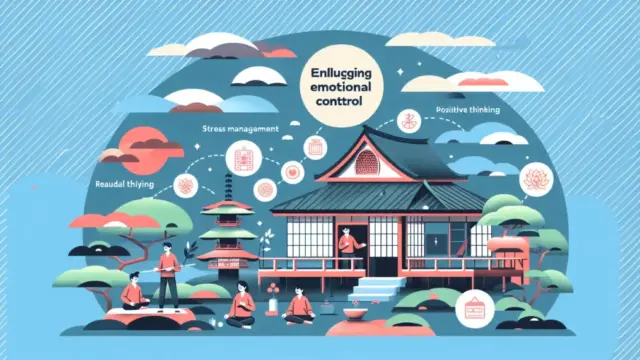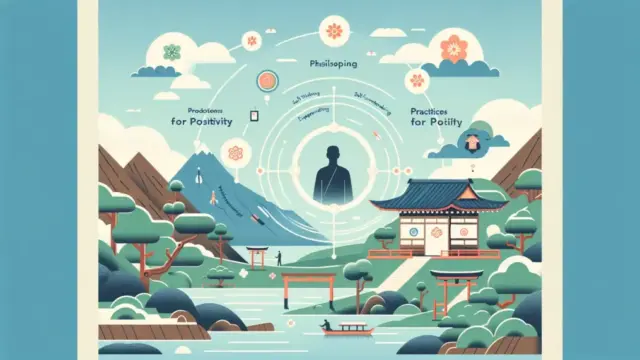Designing your life is an essential process that involves introspection and mapping out a path toward your future. Many people go through their daily lives with a vague sense of anxiety, but by taking concrete steps, you can turn your ideal life into a reality. Are you ready to take that first step on this journey?
In this article, we will explore the importance of self-understanding, goal setting, action planning, and the significance of reflection. You’ll learn specific methods for designing your life and gain insights to help you create a more fulfilling future. So, let’s embark on this journey to shape your life together!
- Discover the importance of self-understanding and how to deepen it
- Learn the techniques for setting SMART goals
- Understand the significance of practice and reflection
Chapter 1: The Importance of Self-Understanding
To design a fulfilling life, understanding yourself is essential. When you deepen your self-awareness, you clarify what you truly desire and what your values are, making it easier to set meaningful goals. In this chapter, we’ll explore the significance of self-recognition and consider ways to enhance your understanding of yourself. By deepening your self-awareness, you can take the first step toward a richer life.
What is Self-Awareness?
Self-awareness is the ability to understand your emotions, thoughts, and behaviors, and to know who you are as a person. It’s crucial for recognizing your strengths and weaknesses, as well as reflecting on your relationships with others and the way you lead your life. With self-awareness, it becomes clearer what you want and the kind of life you wish to pursue.
To enhance your self-awareness, it’s important to observe yourself in your daily life. For instance, pay attention to what brings you joy and what triggers your stress. These insights can greatly assist in deepening your self-understanding.
- Self-awareness means understanding your emotions and actions.
- Recognizing your strengths and weaknesses is vital.
- Observing yourself in daily life can be beneficial.
Methods to Deepen Self-Understanding
There are several practical ways to deepen your self-understanding. One effective method is journaling. By writing down your daily experiences and feelings, you can more easily identify patterns in your thoughts and emotions. Additionally, it’s important to regularly set aside time to reflect on your goals and values. This dedicated time allows you to focus inward and advance your self-understanding.
Moreover, seeking feedback from others can be incredibly effective. Asking trusted friends or family members what they think about you can provide fresh perspectives. Using others’ opinions as a reference can also serve as a valuable opportunity to reaffirm your self-worth.

Deepening your self-understanding is crucial for goal-setting. To help you visualize the life you aspire to, check out this article on “Creating Your Life Blueprint: Steps from Self-Awareness to Goal Setting.” You’ll gain valuable insights on ways to enhance your self-awareness and design a better life.
- Use journaling to organize your thoughts and feelings.
- Regularly reflect on your goals and values.
- Receiving feedback from others can be helpful.
Chapter 2: The Art of Goal Setting
Once you’ve deepened your self-understanding, it’s time to move on to setting concrete goals. Having goals is crucial for designing a fulfilling life. They give meaning to your daily actions and help you lead a more enriching existence. In this chapter, we’ll explore the art of goal setting, focusing particularly on how to set SMART goals and how to envision your life’s vision.
Setting SMART Goals
SMART goals provide a framework for making your objectives more specific. The acronym SMART stands for Specific, Measurable, Achievable, Relevant, and Time-bound. By keeping these five elements in mind when setting your goals, you can outline a clearer path toward achieving them.
For instance, instead of having a vague goal like “getting healthy,” you could aim for something specific like “jogging for 30 minutes, three times a week.” This clarity helps you understand exactly what you need to do. The more specific your goals are, the easier it becomes to take action toward achieving them.
- SMART goals help you set specific and measurable objectives.
- They provide examples of concrete actions to pursue better health.
- Clear goal setting encourages proactive behavior.
Envisioning Your Life’s Vision
Next, it’s essential to envision your life’s vision. A vision is about understanding the kind of life you want to lead in the future and having an ideal image of it. By creating this vision, your goals become more meaningful, and your daily actions gain consistency.
To form your vision, start by reflecting on your core values and desired lifestyle. For example, consider whether you want to prioritize time with family, seek personal growth, or other aspects that resonate with you. Writing down your vision can help you visualize it more concretely.
- It’s important to envision your ideal life.
- Start by contemplating the values you hold dear.
- Writing down your vision allows for a clearer image to emerge.
Chapter 3: Creating an Action Plan
Once you’ve set your goals and envisioned your life, it’s crucial to create an action plan to make those visions a reality. An action plan outlines the specific steps you need to take to achieve your goals, clarifying what you should do in your daily life. In this chapter, we’ll discuss how to create concrete action steps and share some effective scheduling tips.
Concrete Action Steps
Action steps are specific actions you need to take to reach your goals. Start by breaking down your goals into smaller, manageable steps. For instance, if your goal is to “become fluent in English,” some possible action steps might include “attending an English conversation class once a week” or “spending 30 minutes each day on English listening exercises.”
By defining your actions in this way, you gain clarity on what needs to be done, allowing you to steadily progress toward your goals. Additionally, the more achievable your action steps are, the easier it will be to maintain your motivation, so it’s important to set them within a realistic range.
- Action steps involve breaking down your goals into specific tasks.
- Starting with small actions can help you feel a sense of accomplishment.
- They provide a clear pathway toward achieving your goals.
Tips for Effective Scheduling
After creating your action plan, the next step is to manage your schedule to put it into practice. By using your time wisely, you can smoothly advance toward your goals. First, develop a schedule that fits your lifestyle. For example, you might utilize your morning hours or set aside short periods during your workday to accomplish tasks that work for you.
It’s also essential to allow some flexibility in your schedule. Unexpected events or challenges can arise, so having a buffer in your plans can alleviate stress. Regularly taking time to review your progress is important too, as it gives you the opportunity to adjust your plans as needed.
- Create a schedule that aligns with your lifestyle.
- A flexible plan can help reduce stress.
- Regularly reviewing your progress is key to refining your plans.
Chapter 4: Practice and Reflection
Once you’ve set your goals and devised an action plan, the next step is to put it all into practice. Taking action is your first step towards designing the life you want. However, it’s not just about acting; measuring your progress and learning from failures are equally crucial. In this chapter, we’ll explore how to track your progress and turn setbacks into opportunities for growth.
How to Measure Progress
Measuring your progress is essential for understanding how far you’ve come toward your goals. There are various ways to gauge your progress, but one of the most effective methods is to conduct regular reflections. For instance, setting aside time each week to review how close you are to your goals can be incredibly insightful. Consider what worked well and identify any challenges you faced during that period.
Additionally, using tools like checklists or graphs can help visualize your progress. Seeing specific numbers and achievements allows you to recognize your growth more easily, which can be a powerful motivator.
- Regular reflections are key to understanding your progress.
- Utilize checklists and graphs to visualize your achievements.
- Seeing your results helps maintain motivation.
The Importance of Learning from Failure
In the journey of designing your life, encountering failures is inevitable. Instead of fearing failure, it’s important to view it as an opportunity for growth. By learning from your mistakes, you can refine your actions and apply those lessons moving forward. For example, if your attempts to reach a goal didn’t pan out, analyzing the reasons behind it and contemplating how to change your approach next time is crucial.
Experiencing failures can also deepen your self-awareness and foster flexible thinking. By daring to face challenges without fear of failure and leveraging those experiences for future endeavors, you can craft an even more fulfilling life.
- Embrace failure as a chance for growth.
- Analyzing the causes of your setbacks is essential for improvement.
- Experiencing failure enhances self-understanding.
Conclusion
To design your life, it’s crucial to start with a deep understanding of yourself and clarify what goals you truly desire. From there, you can establish concrete action steps and take planned actions to move closer to your ideal life. Regularly reflecting on your progress and maintaining a mindset that embraces learning from failures will allow you to experience personal growth.
While this process may seem daunting at first, taking it one step at a time can help you successfully design your life. Remember to cherish yourself and enjoy the journey toward achieving your ideal future.
- Deepening self-understanding is your starting point
- Define your goals and set action steps
- Measure your progress and foster growth by learning from failures
Now, let’s take that first step toward designing your life! If you have any thoughts or feedback, please share them in the comments!

















































Comment